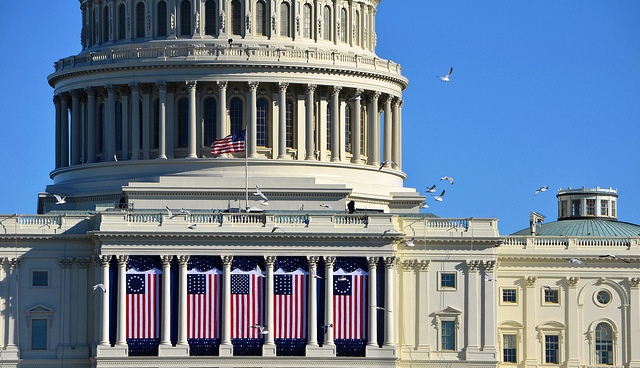What’s the Difference? Inauguration Posted by Gary Locke on Jan 19, 2017 in Culture, English Grammar, English Vocabulary, News

With a new administration taking office, it seems a good time to remind ourselves that the words of our leaders can have real significance. The misuse of a word, even selecting one simile when another would have been more appropriate, could lead to misunderstandings. And misunderstandings may have consequences. It may not lead to a war, but it could annoy grammarians.
Let’s take a look at some words associated with US presidential inaugurations and discover the differences between common synonyms.
What’s the difference between an oath and a vow?
Both of these words are nouns, and they are commonly seen as interchangeable. Both words mean a serious, or solemn, promise. However, there is one significant difference. An oath is sworn, usually before a congregation and often while invoking a deity. A vow is given, but it need not be made in the presence of anyone. The president takes the oath of office from the Chief Justice of the United States Supreme Court during the swearing-in ceremony, and the oath is now customarily accompanied by the words, “So help me, God.”
What’s the difference between to swear and to affirm?
The official words to the oath of office are laid out in accordance with guidelines set forth in Article II, Section 1 of the United States Constitution. “Before he enter on the execution of his office, he shall take the following oath or affirmation. ‘I do solemnly swear or affirm that I will faithfully execute the office of president of the United States and will to the best of my ability preserve, protect and defend the Constitution of the United States.’” So, a president may select either the word swear or affirm. Why? And what’s the difference?
As we have discussed, swearing an oath implies religious beliefs. In accordance with the US Constitutional belief in the separation of Church and State, a secular option was offered to incoming presidents.
In all likelihood, this distinction was made to appease certain religious affiliations. Protestant groups such as the Quakers and Jehovah’s Witnesses literally interpret Biblical injunctions against swearing to an oath as blasphemy. Thus, they were allowed to substitute the word affirm.
Curiously, both Richard Nixon and Herbert Hoover, both Quakers, chose to use the traditional phrase, “…do solemnly swear…” Only New Hampshire’s Franklin Pearce is known to have substituted the word affirm, taking a secular affirmation of office with his hand on a book of law, rather than on a Bible.
What’s the difference between a ball, a party, and a prom?
While the Constitution demands that the oath or affirmation of office be taken before a president can actually execute any official duties, none of the other accepted traditions of an inauguration are necessary. Anybody can administer the oath, anywhere (it doesn’t have to be in Washington), and there is no legal or binding rule on date and time. Since 1937, the inauguration has been held at noon on January 20, following the election year, but it doesn’t have to be. There doesn’t have to be an address to the nation. There don’t even have to be parties!
The first Inaugural Ball was held on March 4, 1813 for the second inauguration of James Madison. First Lady Dolly Madison was such accomplished hostesses that it was considered to be a real treat to be at one of her parties. The tradition continues, now with multiple balls held during the evening of the inauguration.
Balls, parties, and proms are synonymous with each other. They are social events involving couples and dancing. So, what’s the difference?
A prom, or promenade, is the formal gathering of guests into a room for the ball, which is the main event in which a dance party is the highlight. Got that? The promenade is when people gather, the ball is the main event, the party is what you do at the main event.
Sadly, I forgot to order my tuxedo, my wife’s ball gown is at the cleaners, and my invitation seems to have been lost in the mail.
Photo by angela n. on Flickr

Build vocabulary, practice pronunciation, and more with Transparent Language Online. Available anytime, anywhere, on any device.



